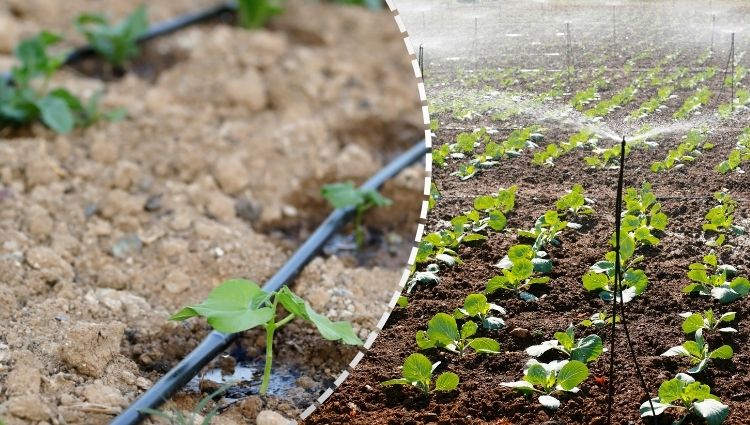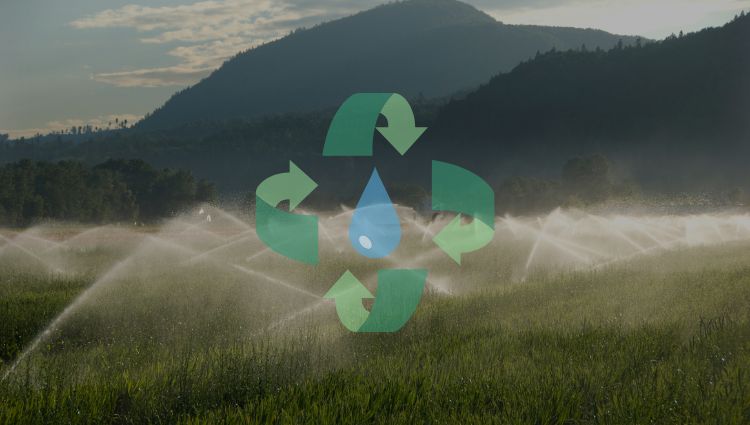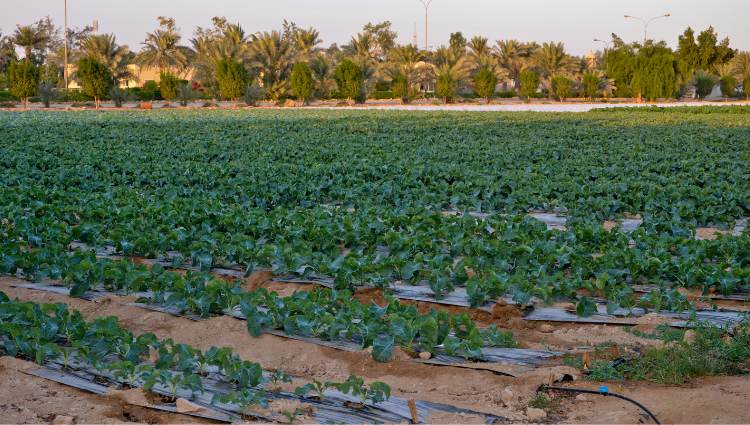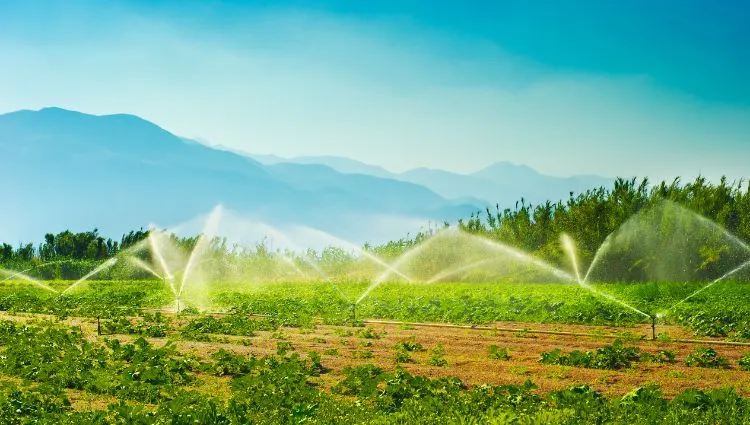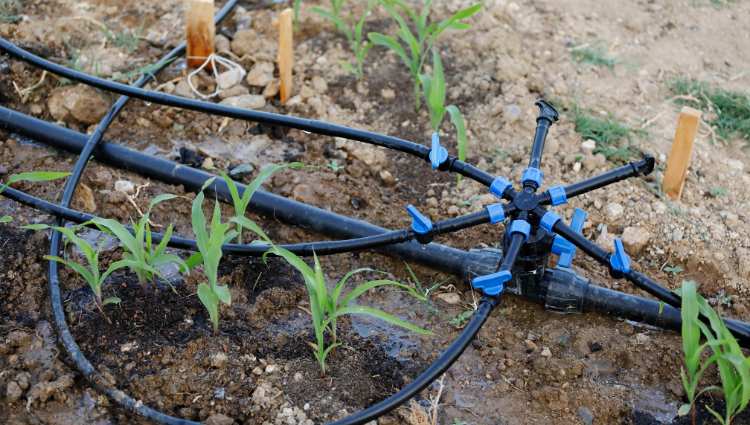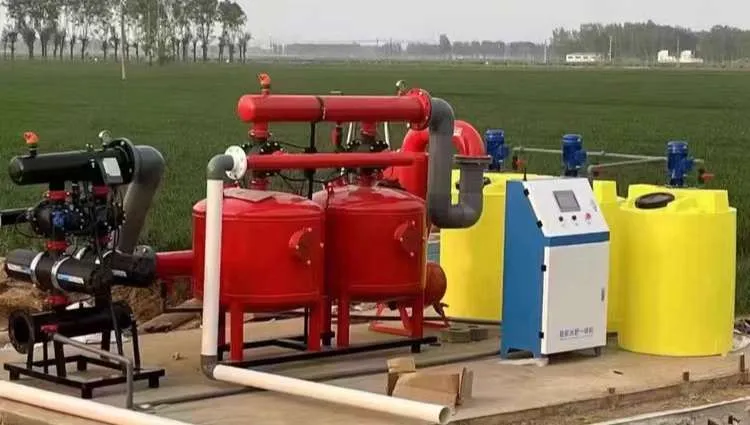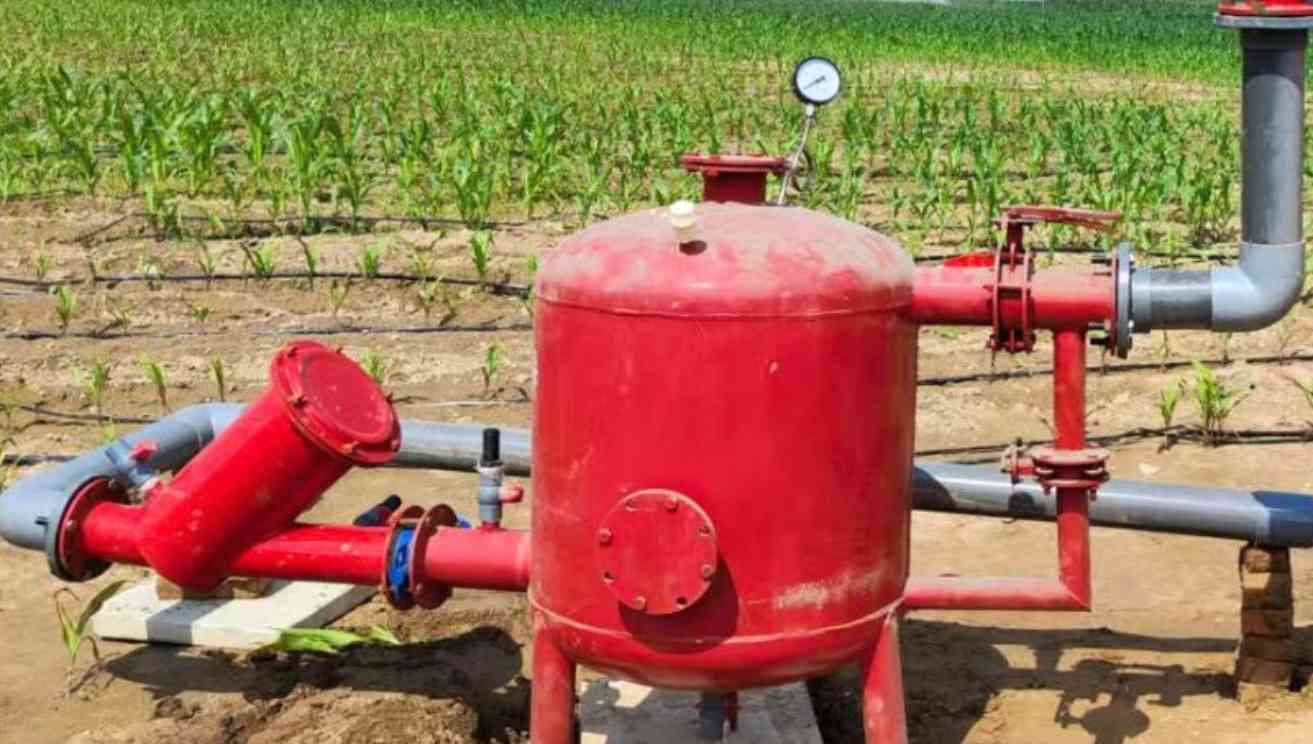Spis treści
We all know that many regions on Earth are facing water scarcity. To cope with this problem, people—especially those working in agriculture—must understand modern water-saving irrigation technologies. Water-saving irrigation is mainly divided into drip irrigation and sprinkler irrigation. This article will mainly talk about their differences and how to choose between them.
First, let’s understand what a drip irrigation system and a sprinkler irrigation system are.
A complete drip irrigation system consists of a main pipe, sub-pipes, and drip devices. Through the main and sub-pipes, water is delivered to the emitters or drip holes near the roots of the crops, enabling precise water supply to the root system.
On the other hand, the sprinkler system has a wider watering range. It mainly relies on sprinklers to spray water. The sprayed water droplets are like rainfall, which can fall evenly on the plants, achieving irrigation over a larger area.
Next, let’s compare the different functions of drip and sprinkler irrigation. By comparing their advantages and disadvantages, we can better understand how to make a choice.
Water Saving Effect
The water-saving effect of drip irrigation is much higher than that of sprinkler irrigation. This is because drip irrigation can directly supply water to the roots of the crops or the soil near the roots. It is a one-to-one water supply process, very precise, so it can maximize the utilization rate of water resources.
Sprinkler irrigation, on the other hand, is an irrigation method that simulates rainfall. Although it covers a large area, it sacrifices precision. During the sprinkler process, water will evaporate, be lost, and non-cultivated soil (such as the gaps between plants) will also be watered. These factors make sprinkler irrigation less water-efficient than drip irrigation.
Presja robocza
Ogólnie rzecz biorąc, drip irrigation requires lower working pressure. Since sprinkler irrigation needs to spray water to a higher height and a farther distance, the working pressure it requires is higher.
Irrigation Area and Uniformity
We already know that drip irrigation can supply water very precisely, but its irrigation area is limited to the root zone of the crops. It cannot achieve large-scale, fully uniform irrigation.
But sprinkler irrigation is different. It can achieve large-scale and comprehensive irrigation. Na przykład, a sprinkler or rain gun can spray water several meters to dozens of meters away. Ponadto, these sprinkler devices can rotate 360 stopnie, which enables them to cover a full circular area with water. Dlatego, if the planting area is large, sprinkler irrigation is a better choice.
Planting Density
Drip irrigation is more suitable for crops planted individually. If the planting area is not particularly large and the planting density is relatively low, choosing drip irrigation is more appropriate because it is more precise and water-saving.
Sprinkler irrigation is more suitable for crops planted intensively. In this way, water resources can be maximally utilized, and unnecessary water waste can be reduced.
Terrain
In terms of terrain, drip irrigation has strong adaptability. Whether in plains or complex terrains with slopes, it can be easily handled.
Sprinkler irrigation also has strong adaptability, but if the terrain is complex and undulating, it may affect the uniformity of watering. Dlatego, sprinkler irrigation is more commonly used in plain areas or areas with little terrain variation.
Soil Structure
The water supply method of drip irrigation is very gentle, so it will not cause significant damage to the soil structure. Jednakże, the water supply method of sprinkler irrigation has a greater impact and may affect the soil structure, especially the surface layer of the soil.
Wind Resistance
As long as the drip irrigation pipeline system is laid and installed firmly, wind generally has little impact on it. But wind has a greater impact on sprinkler irrigation, because the sprinkler system sprays water into the air. If the wind is strong, it will affect the irrigation effect. Dlatego, it is recommended to use sprinkler systems when wind is weak.
Installation and Maintenance Costs
The installation cost of drip irrigation is higher than that of sprinkler irrigation. Because drip irrigation supplies water only to plant roots, more emitters and drip holes are needed, which increases material and labor costs. Ponadto, since the water outlets in drip irrigation are smaller, poor water quality can easily cause clogging, so it requires high-quality filtration equipment, which also increases maintenance costs.
Sprinkler irrigation is different. It is easy to install and easier to maintain. Its resistance to clogging is also stronger than drip irrigation. Dlatego, its installation and maintenance costs are lower than those of drip irrigation.
Types of Suitable Crops
Drip irrigation is suitable for individually planted crops, with small planting spacing, and crops whose root systems have high requirements for water and nutrients. Na przykład: strawberries, tomatoes, cucumbers, tulips, roses, and other vegetables and flowers.
Sprinkler irrigation is more suitable for crops that need to be planted on a large scale, such as wheat, kukurydza, cotton, soybeans, and other field crops. It is also suitable for pastures, gospodarstwa, and landscape greening.
Conclusion
Based on the differences between drip irrigation and sprinkler irrigation listed above, we can roughly summarize: if the crop planting distance is small, the terrain is uneven, and the requirements for water utilization and for water and nutrients are high, then choosing drip irrigation will be more suitable. If the crop’s growing environment requires high humidity, the planting area is relatively flat and large, then choosing sprinkler irrigation will be more appropriate.
On the other hand, choosing a suitable irrigation system also depends on labor and material costs, as well as the condition of water resources. If the budget is sufficient and the irrigation area lacks water, then drip irrigation is a better choice. If you want to reduce maintenance costs and the soil has high water demand, then sprinkler irrigation is more suitable.
Oczywiście, the choice between sprinkler and drip irrigation is not absolute. The two can be combined and used together to fully take advantage of their strengths, which can lead to better irrigation results!
Ostateczne słowa
Finally, please allow me to introduce our company. Rainfaun is an irrigation product manufacturer headquartered in China. We produce and export products such as drip irrigation and sprinkler systems, w tym drip irrigation valve, drip irrigation fittings, Dripline, Taśma kroplowa, dripper, arrow drip stake, sprinkler, micro sprinkler, rain gun, filters, zawory, połóż płaski wąż, PVC pipe fittings, Złącza PP, BSP thread fittings, i tak dalej. You can find information about Rainfaun and our products on this website.
Jeśli chcesz współpracować z nami, możesz Kliknij tutaj to fill out the form.
Autor: Allen and Michael
Redaktor: Michael
Recenzent treści: Michael
